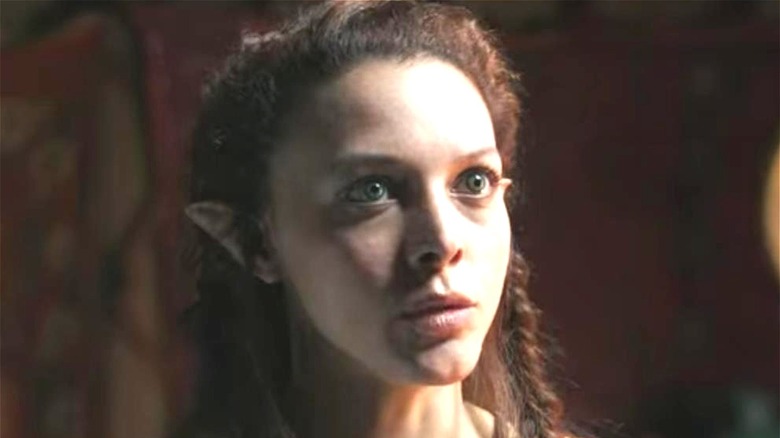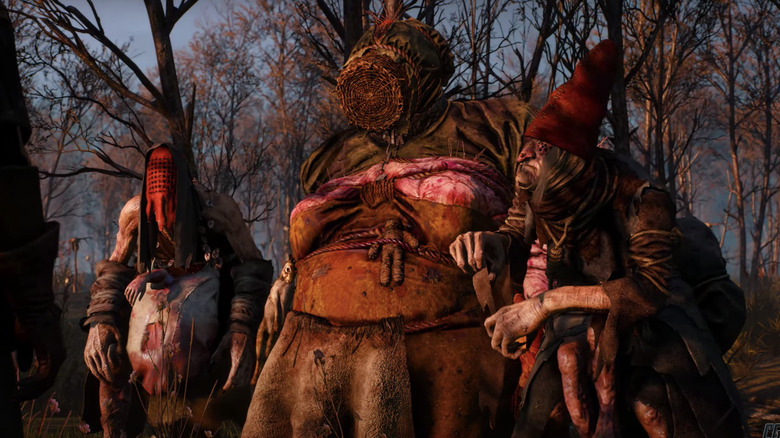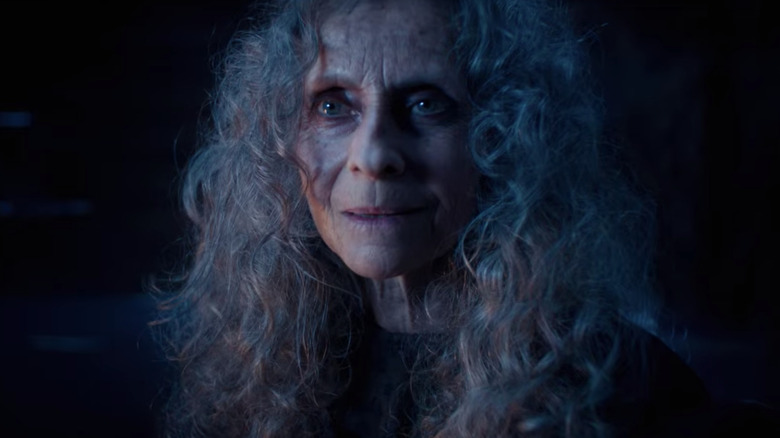Everyone Is Trying To Figure Out Who The Cabin Witch Is In The Witcher Season 2
In "The Witcher," Geralt of Rivia (Henry Cavill) has been known to fight a monster or two. The dual sword-wielding Witcher regularly risks his life for coin and to rid the Continent of monsters. One of the most baffling of the bunch is the Cabin Witch, also known as the Mother of Forests (Ania Marson), whom Yennefer (Anya Chalotra) encounters after the Battle of Sodden Hill.
Because of her use of forbidden spells, Yennefer has lost her ability to practice magic. Desperate to regain her power, Yennefer finds an answer when she encounters the Mother of Forests. The only catch is she must sacrifice Geralt's "Child of Surprise," Ciri (Freya Allan), to get what she wants.
In the 7th episode, the so-called "Cabin Witch" is revealed to be Voleth Meir, also known as The Deathless Mother, who feeds off of pain and suffering. Ciri would be the perfect sacrifice, as her death would cause the most pain to those around her. Although Geralt reveals the witch's identity, she is still shrouded in mystery. Voleth Meir is not exactly an established "Witcher" character, but she does have roots that can be traced back to the franchise's books and video games, as well as classic folklore.
She may be a reference to the Crones
Voleth Meir bears a strong resemblance to the Crones that Geralt encounters in "The Witcher 3: The Wild Hunt." Also known as the Ladies of the Wood, they represent many witch archetypes in folklore (per The Gamer). These archetypes include the Fates of Greek mythology and the Weird Sisters in "Hamlet."
But there are more similarities to be found, beyond just the physical ones. Like Voleth Meir, the Crones live in the woods and have suspicious motivations. In "The Witcher 3," the Crones are often responsible for the deaths of orphans. Voleth Meir also uses children for her own means.
Voleth Meir appears to Yennefer as an altered version of her younger self, using this guise to manipulate Yennefer to do her bidding. Most importantly, Voleth Meir convinces Yennefer to deliver Ciri to her in a presumed sacrifice, much like how the Crones have been a threat towards the younger people in the land.
She is based in Slavic Lore
"The Witcher" has roots in Slavic folklore as evidenced by monsters such as the Striga. Voleth Meir has roots there as well, most evident being the connection to the Slavic folktale of Baba Yaga. This famous old witch shows up prominently in the Russian folktale "Vasilisa the Beautiful," a dark tale reminiscent of Cinderella (via VICE).
Baba Yaga appears as an old woman, but is a trickster by nature. Both she and Voleth Meir feed through their trickery, especially when it comes to young women — but that's not their only similarity.
Baba Yaga is known for her home that walks around on chicken legs. When Voleth Meir has absorbed enough pain to re-energize her, she escapes her hut, which rises above the ground on similar legs. Geralt, Yennefer, and Ciri ultimately banish Voleth Meir to her home sphere, but not before she inflicts a great amount of damage on everyone around her.


